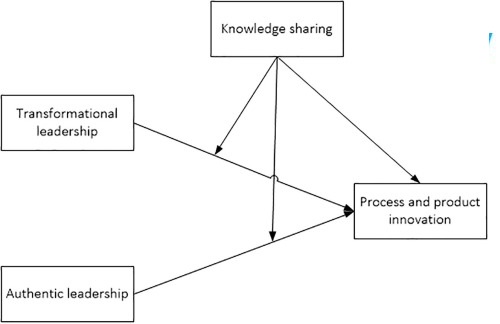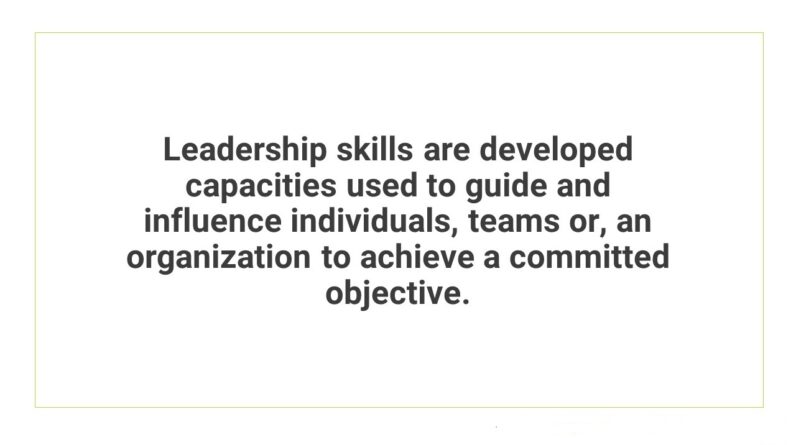 What is servant leadership? Simply put, it is the act of leading with the intention to serve. It involves consistently listening to the concerns and goals of others and supporting their growth. It values the success of the majority above the individual. If you’d like to learn more about this practice, read on! Here are some of its most important characteristics. These characteristics make it the perfect leadership style for any organization. If you want to lead with servant leadership, consider the following characteristics.
What is servant leadership? Simply put, it is the act of leading with the intention to serve. It involves consistently listening to the concerns and goals of others and supporting their growth. It values the success of the majority above the individual. If you’d like to learn more about this practice, read on! Here are some of its most important characteristics. These characteristics make it the perfect leadership style for any organization. If you want to lead with servant leadership, consider the following characteristics.
Principles
In order to lead people well, you must know how to empower them and create a culture of trust. The principles of servant leadership emphasize the importance of building relationships and developing self-awareness. They foster an environment of collaboration and open communication, and they ensure that everyone contributes to the final decision. Whether in a small team, large corporation, or even in your own company, you must not be a one-person-show; you need to work to convince each person of his or her value.
As a leader, you should never ask someone to do something they would never do. You must also stand up for your employees when they don’t follow company policy. Having a servant mindset is a hallmark of true leadership, and you must apply these principles in all areas of your life. Here are 10 principles of servant leadership:
Listening intently: Regardless of your position or title, being a servant leader means that you are committed to listening. You must take the time to understand the reasoning behind a team’s decision, and then provide a solution that works in the best interests of everyone. Observing the body language of team members is another important part of servant leadership. Ultimately, servant leaders are committed to ensuring the wellbeing of their teams. In addition to building trust, servant leaders also hire from within their organizations and invest in their personal growth and well-being.
Developing foresight helps leaders develop a better understanding of their past experiences, both personal and professional. It helps them conceptualise the future and what will be the likely outcome of their actions. This ability is rooted in the intuitive mind. Taking notes can also help you focus on your past experiences. Developing foresight helps you avoid making decisions that are not in the best interest of the organization or its employees.
Despite the many benefits of servant leadership, the concept is difficult to apply to every situation. Individual leaders can adopt it, but the practice of serving others is most effective in organizations where there is widespread alignment among leaders. Greenleaf promoted the idea that organisations need to become servant-oriented in order to make a difference in the world. And that’s why the principles of servant leadership are not just an ideal for an individual leader – they can work for any company or organization!
Practices
The practice of serving others is a foundational principle of servant leadership. While a CEO setting an example can be effective in a small team, the power of servant leadership gets diluted in larger organizations. To be effective, leaders must develop skills in servant leadership, which involve developing others. Listed below are some of the key practices of servant leadership. If you want your organization to thrive, use these principles as a foundation for your management style.
Being Situationally aware: A servant leader understands that he or she must consider the actions of others and their values. He or she recognizes that the success of others ultimately depends on their success. A servant leader’s goal is to put others before themselves, understanding that success requires a team effort and trust. In addition to empowering employees, servant leaders are committed to creating a culture of respect and trust within an organization. To be effective in this culture, leaders must be situationally aware.
Empathy and sensitivity: Being a servant leader requires that leaders learn to listen with empathy, and refrain from preaching or imposing their will on others. A servant leader must listen deeply, incorporating input into major decisions while maintaining sensitivity to others. While this may sound like an oxymoron, Kouzes and Posner argue that “sensitivity to others is a prerequisite for leadership”.
Listening: A servant leader listens to others and coaches them to reach their goals. They allow their colleagues to develop and contribute their strengths and ideas, as opposed to dictating their own way. They also encourage others to be themselves, allowing others to do the same. They take the time to build relationships and foster diversity and equity. They also work to navigate workplace conflict, ensuring that all employees feel they are valued and appreciated.
Improving moral character: By practicing virtues and humility, leaders cultivate the capacity to be authentic, compassionate, and courageous. These qualities are essential for servant leadership, and can be developed through reflection. In addition, servant leaders engage in a community of practice that includes their colleagues. This community thereby becomes a model of servant leadership in health care. You may also find that this kind of environment makes you a better leader. If you’re seeking to improve your leadership skills and develop your spirituality, this practice can help you achieve both.
Benefits
If you’re considering a career change, a new approach to management called servant leadership may be the way to go. This new leadership style is based on the idea that a company leader should serve as a servant, not as an authority figure. By adopting this leadership style, you’ll benefit your staff, your company’s community, and your bottom line. In fact, studies have shown that servant leadership actually increases profits by more than five times.
It’s important to understand that servant leadership requires big-picture thinking. This means that you need to be able to conceptualize your vision for the future and encourage others to do the same. A servant leader is also concerned with the well-being of a community and is always looking for ways to add social value. In other words, servant leadership is similar to spiritual leadership. It requires humility and the willingness to give up personal time, but can have a powerful impact on the results of an organization.
In addition to fostering emotional health, servant leaders foster trust among team members and strive to achieve the best results for their team. They develop team members’ strengths and encourage them to reach their full potential. These traits can be used to build self-confidence and develop people, including employees. As a result, the team members will work better together than without the servant leader. It’s also easier to develop people in a coaching style, a servant leader’s goal-oriented approach, and the benefits of embracing this style are many.
In addition to developing your team’s abilities, servant leadership allows you to share the power and authority among them. A servant leader places their employees’ needs before their own and works to build a team where everyone is valued and respected. They prioritize the well-being of employees and community members. In short, they are not only employees, but partners, friends, and family. So, what are the benefits of servant leadership? A servant leader is the ultimate team builder!
A major benefit of servant leadership is its ability to build trust and increase employee engagement. It also encourages higher productivity, higher staff engagement, and better relationships with other team members. In the end, these are some of the benefits of servant leadership. These are just some of the many ways it can increase productivity, foster better relationships, and improve business results. For many, this new leadership style is an excellent way to make your employees feel appreciated and valued, and get them to follow you and work harder for the common good.
Measurement
Servant Leadership is complex. There is no single agreed upon measure of servant leadership, and only a limited number of studies have used it. Measurement instruments should focus on the relationship between the leader and the followers, be simple to use, and reflect the key characteristics of servant leadership. The instrument should also link to Greenleaf’s ideas. Despite the lack of an agreed upon definition, there are numerous ways to assess servant leadership.
One study validated a 28-item servant leadership scale that included two dimensions of the trait: forgiveness and accountability. It included a total of 298 participants and 182 workers in the distribution and production areas. The results showed that forgiveness was the strongest indicator of servant leadership. Forgiveness is a particularly strong indicator, but only applies when the person has done something wrong. The accountability factor is the strongest indicator of the leader’s part of servant leadership.
Another method for evaluating servant leadership is the use of surveys. There are many ways to measure this leadership style, including using surveys. Surveys are an excellent way to test the assumptions of the theory and determine if a particular servant leader is effective. A servant leadership survey can help to identify key qualities and highlight areas that require improvement. This type of survey can also be used to evaluate the effectiveness of training programs. The survey has been validated in several countries, which indicates that it is a valid and reliable tool for assessing servant leadership.
The most effective servant leaders create a vision for their organization before setting the course. The leader has the ability to influence their team to buy into that vision. The team buy-in is crucial because a missed vision will have a profound impact on the outcomes. The goal of servant leadership is to inspire people and ensure that everyone is on the same page. And when this is the case, servant leadership will be even more effective. There is no better measure of servant leadership than this.
The study also aims to examine the mediating effects of shared servant leadership on team performance. By examining the effect of shared servant leadership on the team’s performance, the study can validate a short servant leadership measure based on four key dimensions: academic competency, team familiarity, and shared leadership. And by using a round-robin design, the measurement of shared servant leadership will be more accurate. When the study is complete, a more comprehensive measure will emerge.






